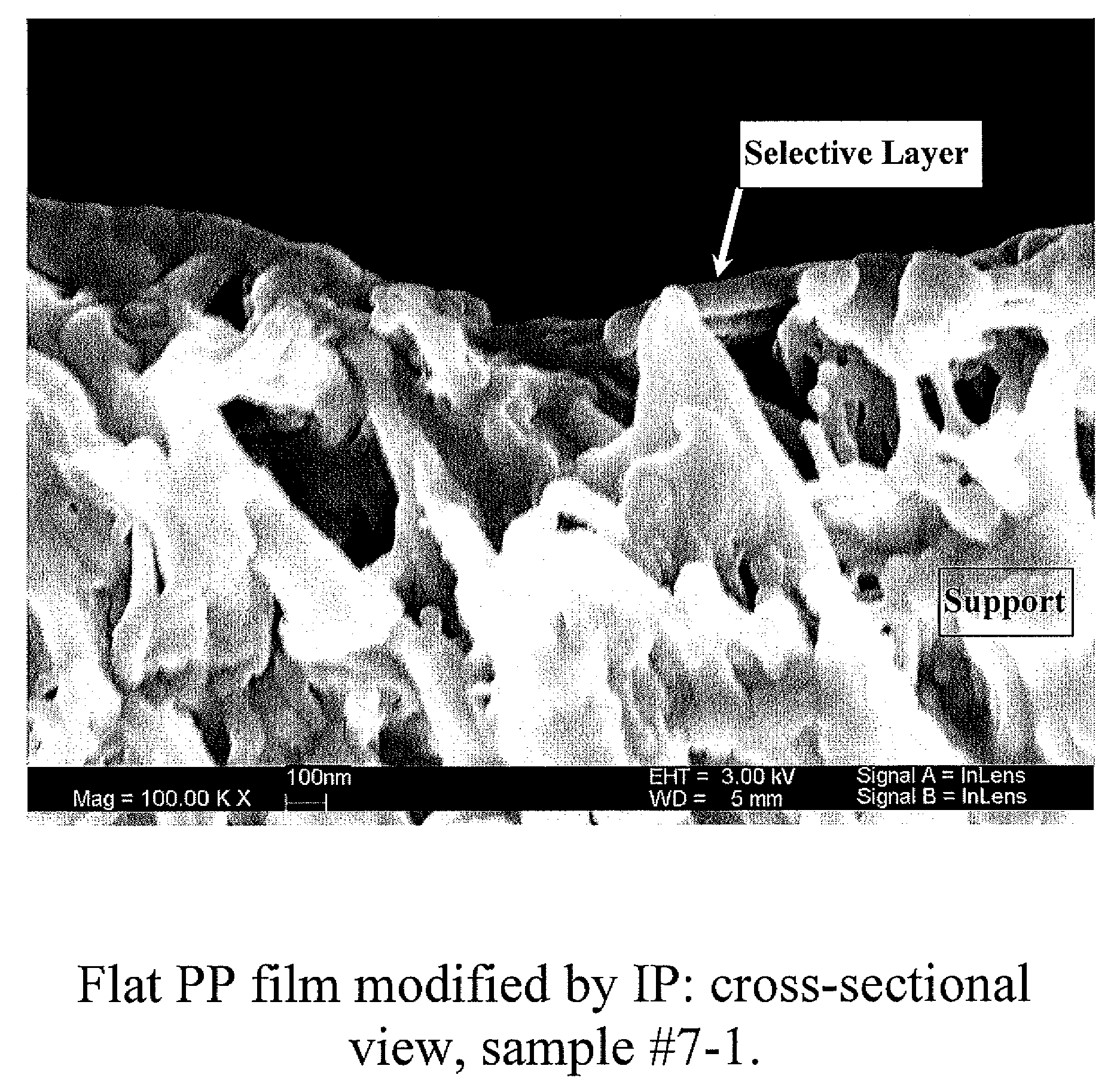Composite Membranes and Membrane Systems and Methods For Production and Utilization Thereof
a membrane system and composite membrane technology, applied in the field of membrane systems, can solve the problems of difficult to optimize a membrane/membrane system for a particular application, limited application range of a particular membrane/membrane system, and limited material properties, etc., to achieve improved interfacial polymerization techniques, easy use, and improved performan
- Summary
- Abstract
- Description
- Claims
- Application Information
AI Technical Summary
Benefits of technology
Problems solved by technology
Method used
Image
Examples
experimental conclusions
[0170]Thin film composite membranes on polypropylene hollow fibers and flat films were successfully prepared by interfacial polymerization on the porous polypropylene support. The coating procedure to coat X-20 hollow fiber membrane modules was optimized for defect-free and uniform coating. Coated hollow fiber membranes were characterized by nanofiltration of brilliant blue R in methanol and safranin O in methanol. Only a limited variation in pore size of the coating could be achieved by varying the concentrations of the monomers for the studied reactive monomer system of PEI-IPD. Rejection values of 88% and 43% were achieved for brilliant blue R and safranin O, respectively, at a transmembrane pressure of 413 kPa in a hollow fiber membrane module coated for ten minutes with 0.75 wt % monomer concentrations of PEI and IPD. A very thin coating was achieved, although the reaction time was ten minutes, because of the high molecular weight of the amine monomer (PEI). The reactive monome...
PUM
| Property | Measurement | Unit |
|---|---|---|
| Fraction | aaaaa | aaaaa |
| Fraction | aaaaa | aaaaa |
| Fraction | aaaaa | aaaaa |
Abstract
Description
Claims
Application Information
 Login to View More
Login to View More - R&D
- Intellectual Property
- Life Sciences
- Materials
- Tech Scout
- Unparalleled Data Quality
- Higher Quality Content
- 60% Fewer Hallucinations
Browse by: Latest US Patents, China's latest patents, Technical Efficacy Thesaurus, Application Domain, Technology Topic, Popular Technical Reports.
© 2025 PatSnap. All rights reserved.Legal|Privacy policy|Modern Slavery Act Transparency Statement|Sitemap|About US| Contact US: help@patsnap.com



